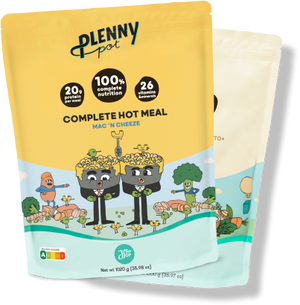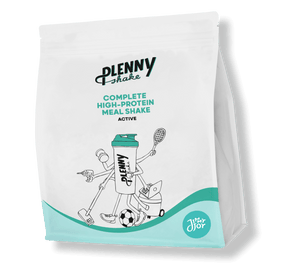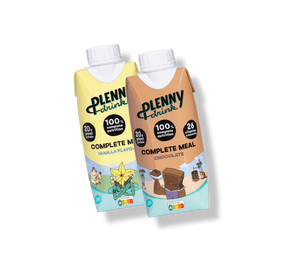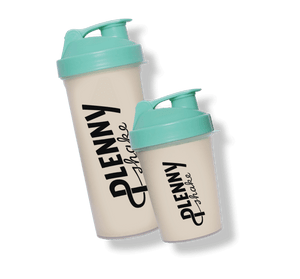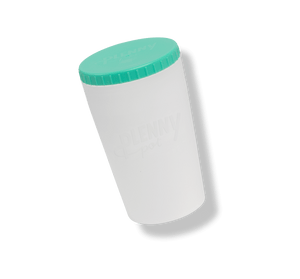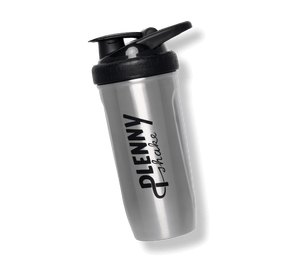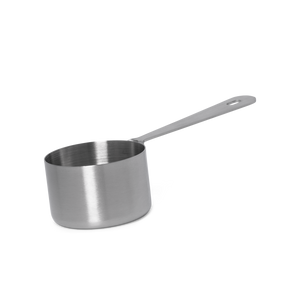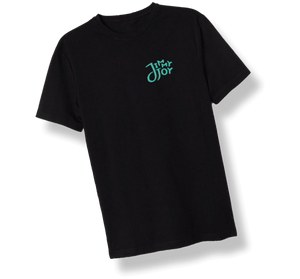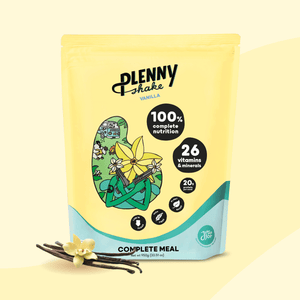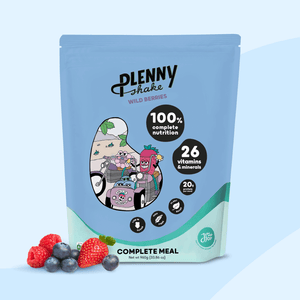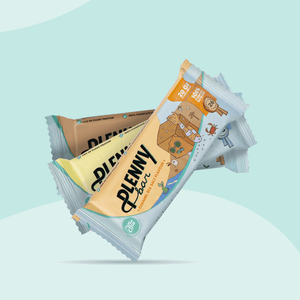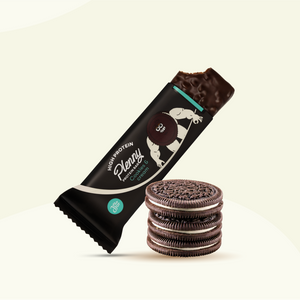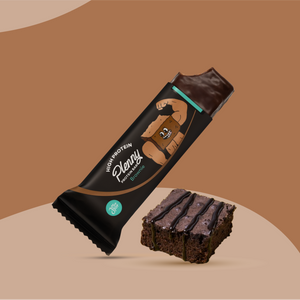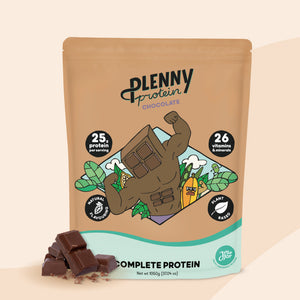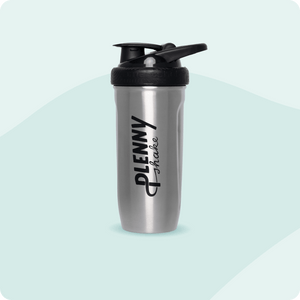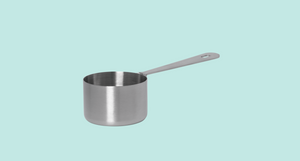
The sweet taste of food gives an important and highly valued taste sensation to the consumer. However, the consumption of large quantities of sugar is not without risk. Sugar consumption is associated with health problems such as cardiovascular disease and diabetes. With this growing awareness, consumers are increasingly seeking products without added sugar [1,2].
Sugar-reduction is an everyday part of product development within the food industry, whereas companies are striving to find ingredients that mimic a sweet sensation without having harmful consequences. Sweeteners are an ingredient widely used in the food industry to replace sugars and refer to “food additive substances used to impart a sweet taste to food”. More than 20 sweeteners are currently allowed by EFSA. For these 20 sweeteners, a distinction can be made between caloric and non-caloric sweeteners, or more scientifically called: extensive and intensive sweeteners [3,4].
E-numbers
Before we can talk about sweeteners, there is something that needs to be discussed first: E-numbers. You have probably seen them on the ingredient list of tons of products and thought: “yuk, artificial ingredients that have nothing to do with real food!” Well, it’s a bit more nuanced than that! E-numbers are an identification of additives which are approved by EFSA after their safety is proven in extensive research. So, when an ingredient is found safe and is added to foodstuff for functional reasons (colouring, sweetening or extending the shelf life) they are identified by a specific E-number. For example, Vitamin C can be added to function as an antioxidant, wherefore it has an E-number (E300). When the spice turmeric is added to colour the food, this is referred to as E100. When it comes to sweeteners, EFSA currently approves 20 sweeteners for which safety is proven [4,5].

Now that the meaning of E-numbers is all cleared up, we can start to touch base with different sweeteners on the market! This article will tell you all about:
- Extensive sweeteners
- Examples of extensive sweeteners
- Safety
- Effect on insulin and appetite
- Intensive sweeteners
- Examples of intensive sweeteners
- Safety
- Effect on insulin and appetite
- Natural or artificial sweeteners: what is the difference?
- Sweeteners in Jimmy Joy products
- Conclusion
Extensive sweeteners
Extensive sweeteners are part of the chemical group of sugar alcohols, also referred to as polyols. They have approximately the same sweetening power as sugar, but make a smaller contribution to the daily energy supply. Various sugar alcohols occur naturally in fruit and vegetables. However, most are processed from other sugars. Polyols are about as sweet as sugar and have a similar taste. Nevertheless, they provide just over half the energy of sugar, namely 2.4 kcal per gram [6].

Examples of extensive sweeteners
Xylitol (E967) is the most researched polyol that naturally occurs in small amounts in leaf vegetables and fruit. However, nowadays it is mostly produced industrially on larger scales. Xylitol has the same sweetness as sugar and is the sweetest of all polyols.
Another example of an extensive sweetener is erythritol (E968). It is produced by the fermentation of glucose in cornstarch and is less sweet than sugar. For this reason, there are combinations of erythritol and other sweeteners on the market [7,8].
Are extensive sweeteners safe to consume?
Because polyols are absorbed slowly and incompletely in the small intestine, it contains fewer calories than sugar. That sounds like a perk, but also has its drawbacks. They can cause gastrointestinal complaints, such as bloating and a laxative effect, when consumed in large doses. Fortunately, erythritol is relatively well absorbed compared to other polyols. The laxative threshold of erythritol is estimated at 0.80 g/kg body weight for women and 0.66 g/kg for men respectively. For all polyols, a maximum dose without laxative effects is established. The key lesson here is to stay below these doses. Your intestinal health may be affected much earlier before you even notice anything, such as diarrhea or other symptoms. Sugar alcohols may sound like the key ingredient for a boozy brunch, but nothing is further from the truth. Polyols contain no ethanol and are therefore suitable for teetotalers [6,9].
Do extensive sweeteners affect insulin and appetite?
Despite the fact that extensive sweeteners contain calories, an important property of these sweeteners is that they do not or hardly raise blood sugar levels [6].
Intensive sweeteners
Intensive sweeteners have a much greater sweetening power than sugar (sucrose) or extensive sweeteners and, as required in very small quantities, produce few or no calories. Since the advent of modern chemistry at the end of the nineteenth century, laboratories have synthesised hundreds of substances with a sweet taste. Only a few of these are currently used as sweeteners in the food industry. So what happened to the others? They were rejected because of cost, negative toxicity outcomes, or a predominantly strong aftertaste. More specifically, the seven intense sweeteners that are currently approved for use in food, have passed lots of tests to reach this status [4,6].

Examples of intensive sweeteners
The sweetest sweetener currently known is thaumatin (E957), which has a sweetening power of 2000 to 3000 times the sweetness of sucrose. Thaumatin is considered natural as it is obtained from the tropical plant Thaumatococcus danielli. Despite its sweetness, thaumatin has a licorice flavour, which limits its industrial uses. Another natural sweetener is stevioside, better known as Stevia (E960). It is extracted from the leaves of the perennial herbaceous plant Stevia Rebaudiana bertoni, also referred to as "the sweet herb of Paraguay". Stevia has a general sweetening power within 200 to 300 times the sweetness of sucrose. This strongly depends on the type of steviol glycosides, of which there are 11 on the market.

Moreover, aspartame (E951) is probably one of the first sweeteners that comes to mind when you think about sweeteners. This sweetener was discovered by chance, and it is the most popular artificial sweetener today. Although aspartame is manufactured synthetically, it consists of two natural protein building blocks, phenylalanine and aspartic acid. Although aspartame is safe for consumption, there is one exception: people suffering from the rare disease PKU (phenylketonuria) cannot completely break down and excrete aspartame, which is a major drawback for industrial use. Another intensive sweetener, without this problem, is sucralose (E955). Sucralose is a synthetically produced sweetener made by processing conventional sugar (sucrose). This was executed for the first time by a British sugar manufacturer in collaboration with an American company, who gave it the brand name Splenda. The sweetener was given the JEFCA (The Joint FAO/WHO Expert Committee on Food Additives) designation 'safe' in 1990. In the European Union, sucralose has been authorised as a substance in a wide range of foodstuffs since 2004. Sucralose has a sweetening power of about 600x the sweetness of sucrose. Unlike other sweeteners, its flavour and bulking properties are similar to conventional sugar. Sucralose is poorly absorbed, with 5-20% entering the blood and being excreted in the urine in an unaltered form [6,10-17].
Are intensive sweeteners safe to consume?
The answer is very short. Yes, they are! As pointed out before, any sweetener on the market has been thoroughly assessed by EFSA. Specifically for sucralose, there are some rumours about its side effects which are related to altering the intestinal microbiome. This would, of course, be a reason for removing sucralose from the safelist, for which we dived deeper into this topic. So, let’s see what all the fuss is about. These rumours are based on one specific study which was published in 2008, performed amongst rats ingesting more sucralose than any human would ever do. Besides the unrealistic amounts, an Expert Panel found that the study was lacking in critical areas for which its reliability is questionable. And there is more! The structure of sucralose is extremely resistant, making it highly unlikely to degrade and change the gut microbiota. For most widely available and useful artificial sweeteners, in particular sucralose, there is an overwhelming amount of evidence that confirms their safety for people in non-extreme amounts. To make sure you don’t exceed these amounts, an ADI (Acceptable Daily Intake) is established for all sweeteners [18-23].
Do intensive sweeteners affect insulin and appetite?
As intensive sweeteners are calorie-free, they do not increase blood sugar and insulin levels or affect glycemic control. Moreover, sweeteners do not increase your appetite either, but they can increase your appetite if you eat them between meals, just like snacks do. Although some epidemiological data seem to suggest that artificial sweeteners cause weight gain, this relationship works the other way around: people who try to lose weight often use artificial sweeteners. In other words: it is the overweight people who often use sweeteners to lose weight, not the sweeteners that make people overweight. In relation to this, sweeteners do stimulate your preference for sweet products, but all sweet foods have this effect [18, 24-30].
Natural or artificial sweeteners, what is the difference?
After reading about the different sweeteners or market, you may wonder what the real difference is between natural and artificial sweeteners. Artificial sweeteners such as sucralose are among the most controversial topics in the industry. But is their reputation earned? Take, for example, the chemical classification of aspartame, E951 (E-number 951). This name is something that frightens many people, as being "unnatural". Just as for the other 1500 or so E-numbers, which are considered "artificial", but include the simple turmeric and vitamin C. Apart from that, everything in the world is "chemical". Natural substances are built up by chemical processes. For example, the chemical structure of glucose is referred to as C6H12O6: 6 carbon atoms, 12 hydrogen atoms and 6 oxygen atoms. Artificially produced glucose is nothing different from glucose from "natural" sources, i.e. not better or worse. [6]

Perceived healthiness, naturalness and quality of natural and artificial sweeteners
To assess the difference between a 'natural' and 'artificial' sweetener incorporated in the Plenny Shake, a study was conducted among Jimmy Joy customers (n=130). We first showed the label that had sucralose (artificial) on the ingredients list. We then asked to assess perceived healthiness, naturalness and quality on a 7-point scale, Here, a high number indicated a high score on perceived healthiness/naturalness/quality. This was followed by doing the same for stevia (natural). After analysing the results, some conclusions can be drawn. Firstly, the perceived healthiness was the same for both stevia and sucralose, as visualized in figure 1. Secondly, the perceived healthiness for the product with stevia was slightly higher than for the product with sucralose (figure 2). Lastly, the perceived quality of the product with sucralose was slightly higher than for the product with stevia (figure 3). However, none of these differences were found to be statistically significant, which means that the small differences may be caused by chance. In conclusion, the results clearly suggest that natural and artificial ingredients may lead to the same consumer perception.

Figure 1: Comparison of the perceived healthiness of the Plenny Shake sweetened with sucralose and stevia

Figure 2: Comparison of the perceived naturalness of the Plenny Shake sweetened with sucralose and stevia
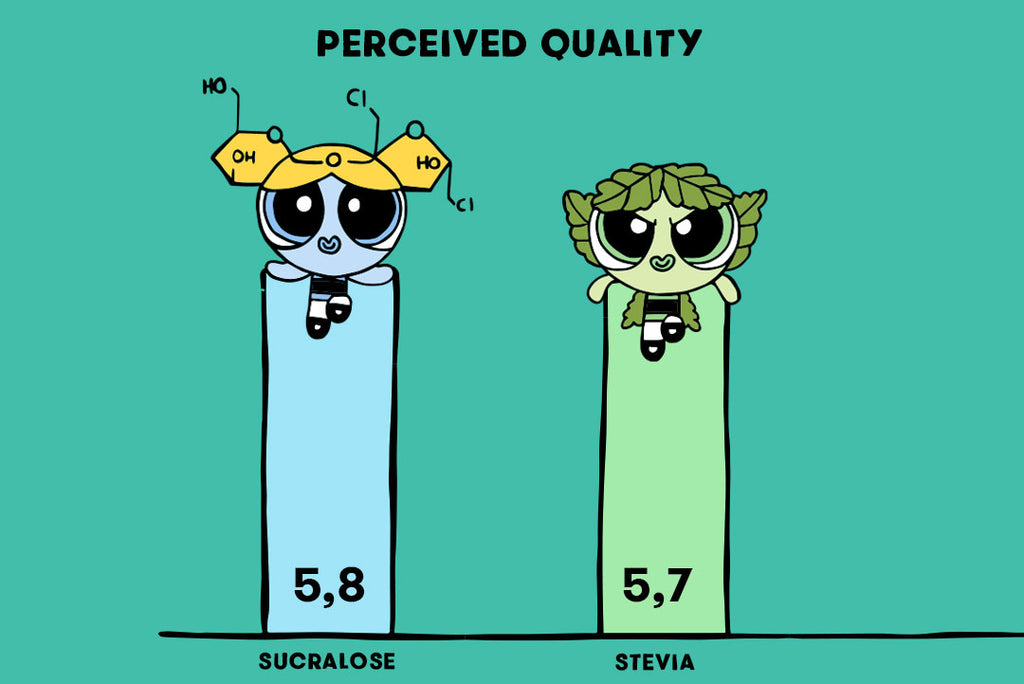
Figure 3: Comparison of the perceived quality of the Plenny Shake sweetened with sucralose and stevia
Sweeteners in Jimmy Joy
Flavoured varieties of Plenny Shake, Plenny Bar, and Plenny Drink contain a small amount of sucralose, which is summarized in the table below: it’s what we feel is just enough to contribute to that good flavour. You can browse through our entire product range here!
|
Product |
Sucralose per 400 kcal meal |
|
Plenny Shake v3.0 |
0,013 (g) - 0,020 (g) |
|
Plenny Bar v2.0 |
0,01(g) |
|
Plenny Drink v2.0 |
0,0009 - 0,001 (g) |
|
Plenny Shake Active v3.0 |
0,015 (g) - 0,020 (g) |
Conclusion
If you want to make your food sweeter (and who doesn't want that?), use mainly calorie-free sweeteners. They are a calorie-free way to improve the taste of your food, without the drawbacks of sugars and sugar alcohols.
All currently legal, approved artificial sweeteners are perfectly safe to consume if consumed below the recommended maximum intake, which is already absurd. To put this into perspective, as a healthy person weighing 60 kilograms, you could consume around 60 Plenny Shakes per day.
We are always on the lookout for new and innovative ingredients. Please let us know if you think we should investigate a specific ingredient.
Sources
- Gelski J. Europeans seek to avoid added sugar, too [Internet]. 2019 [cited 2020 Feb 7]. Available from:
https://www.foodbusinessnews.net/articles/14994-europeans-seek-to-avoid-added-sugar-too?v=preview
- Siegner C. Majority of US consumers prefer to cut sugar intake than switch to artificial sweeteners [Internet]. Food Dive. 2019 [cited 2020 Mar 11]. Available from: https://www.fooddive.com/news/majority-of-us-consumers-prefer-to-cut-sugar-intake-than-switch-to-artifici/567200/
- Chattopadhyay S, Raychaudhuri U, Chakraborty R. Artificial sweeteners – a review. J Food Sci Technol. 2014 Apr;51(4):611–21.
- Maragkoudakis P. Sugars and Sweeteners [Internet]. EU Science Hub - European Commission. 2020 [cited 2020 Mar 24]. Available from: https://ec.europa.eu/jrc/en/health-knowledge-gateway/promotion-prevention/nutrition/sugars-sweeteners
- Snelson M, Coughlan M. Explainer: what are E numbers and should you avoid them in your diet? [Internet]. The Conversation. [cited 2020 Oct 10]. Available from: http://theconversation.com/explainer-what-are-e-numbers-and-should-you-avoid-them-in-your-diet-43908
- Jong, F. M. (2016). Ons voedsel (6th edition). Fontaine Uitgevers.
- Salli K, Lehtinen MJ, Tiihonen K, Ouwehand AC. Xylitol’s Health Benefits beyond Dental Health: A Comprehensive Review. Nutrients [Internet]. 2019 Aug 6 [cited 2020 Oct 9];11(8). Available from: https://www.ncbi.nlm.nih.gov/pmc/articles/PMC6723878/
- Boesten DMPHJ, den Hartog GJM, de Cock P, Bosscher D, Bonnema A, Bast A. Health effects of erythritol. Nutrafoods. 2015 Mar 1;14(1):3–9.
- Oku T, Okazaki M. Laxative threshold of sugar alcohol erythritol in human subjects. Nutr Res. 1996 Apr 1;16(4):577–89.
- Joseph JA, Akkermans S, Nimmegeers P, Van Impe JFM. Bioproduction of the Recombinant Sweet Protein Thaumatin: Current State of the Art and Perspectives. Front Microbiol [Internet]. 2019 Apr 8 [cited 2020 Feb 13];10. Available from: https://www.ncbi.nlm.nih.gov/pmc/articles/PMC6463758/
- Samuel P, Ayoob KT, Magnuson BA, Wölwer-Rieck U, Jeppesen PB, Rogers PJ, et al. Stevia Leaf to Stevia Sweetener: Exploring Its Science, Benefits, and Future Potential. J Nutr. 2018 Jul 1;148(7):1186S-1205S.
- European Food Safety Authority. Scientific opinion on the safety of the extension of use of steviol glycosides (E 960) as a food additive. EFSA J [Internet]. 2015 Jun 30 [cited 2020 Feb 14]; Available from: https://www.efsa.europa.eu/en/efsajournal/pub/4146
- Amchra FZ, Al Faiz C, Chaouqi S, Khiraoui A, Benhmimou A, Guedira T. Effect of Stevia rebaudiana, sucrose and aspartame on human health: A comprehensive review. J Med Plants Stud [Internet]. [cited 2020 Feb 14]; Available from: https://www.researchgate.net/publication/322992873_Effect_of_Stevia_rebaudiana_sucrose_and_aspartame_on_human_health_A_comprehensive_review
- Blundell JE, Hill AJ. Paradoxical effects of an intense sweetener (aspartame) on appetite. Lancet Lond Engl. 1986 May 10;1(8489):1092–3.
- Tey SL, Salleh NB, Henry J, Forde CG. Effects of aspartame-, monk fruit-, stevia- and sucrose-sweetened beverages on postprandial glucose, insulin and energy intake. Int J Obes 2005. 2017;41(3):450–7.
- Aguilar F, Crebelli R, Domenico AD, Dusemund B, Frutos MJ, Galtier P, et al. Statement on the validity of the conclusions of a mouse carcinogenicity study on sucralose (E 955) performed by the Ramazzini Institute. EFSA J. 2017;15(5):e04784.
- Knight I. The development and applications of sucralose, a new high-intensity sweetener. Can J Physiol Pharmacol. 1994 Apr;72(4):435–9.
- Magnuson BA, Roberts A, Nestmann ER. Critical review of the current literature on the safety of sucralose. Food Chem Toxicol Int J Publ Br Ind Biol Res Assoc. 2017 Aug;106(Pt A):324–55.
- Tandel KR. Sugar substitutes: Health controversy over perceived benefits. J Pharmacol Pharmacother. 2011;2(4):236–43.
- Sims J, Roberts A, Daniel JW, Renwick AG. The metabolic fate of sucralose in rats. Food Chem Toxicol Int J Publ Br Ind Biol Res Assoc. 2000;38 Suppl 2:S115-121.
- Thomson P, Santibañez R, Aguirre C, Galgani JE, Garrido D. Short-term impact of sucralose consumption on the metabolic response and gut microbiome of healthy adults. Br J Nutr. 2019 28;122(8):856–62.
- Young DA, Bowen WH. The influence of sucralose on bacterial metabolism. J Dent Res. 1990 Aug;69(8):1480–4.
- Omran A, Ahearn G, Bowers D, Swenson J, Coughlin C. Metabolic effects of sucralose on environmental bacteria. J Toxicol. 2013;2013:372986.
- Stern SB, Bleicher SJ, Flores A, Gombos G, Recitas D, Shu J. Administration of aspartame in non‐insulin‐dependent diabetics. J Toxicol Environ Health. 1976 Nov 1;2(2):429–39.
- Evert AB, Boucher JL, Cypress M, Dunbar SA, Franz MJ, Mayer-Davis EJ, et al. Nutrition Therapy Recommendations for the Management of Adults With Diabetes. Diabetes Care. 2013 Nov;36(11):3821–42.
- Grotz VL, Henry RR, McGill JB, Prince MJ, Shamoon H, Trout JR, et al. Lack of effect of sucralose on glucose homeostasis in subjects with type 2 diabetes. J Am Diet Assoc. 2003 Dec 1;103(12):1607–12.
- Behnen EMT, Ferguson MC, Carlson A. Do Sugar Substitutes Have Any Impact on Glycemic Control in Patients with Diabetes? J Pharm Technol. 2013 Mar 1;29(2):61–5.
- Mattes RD, Popkin BM. Nonnutritive sweetener consumption in humans: effects on appetite and food intake and their putative mechanisms123. Am J Clin Nutr. 2009 Jan;89(1):1–14.
- Drewnowski A, Rehm CD. The use of low-calorie sweeteners is associated with self-reported prior intent to lose weight in a representative sample of US adults. Nutr Diabetes. 2016 Mar;6(3):e202–e202.
- Yang Q. Gain weight by “going diet?” Artificial sweeteners and the neurobiology of sugar cravings. Yale J Biol Med. 2010 Jun;83(2):101–8.

 Everything You Need In One Meal
Everything You Need In One Meal
 Stay Full For 3-5 Hours
Stay Full For 3-5 Hours




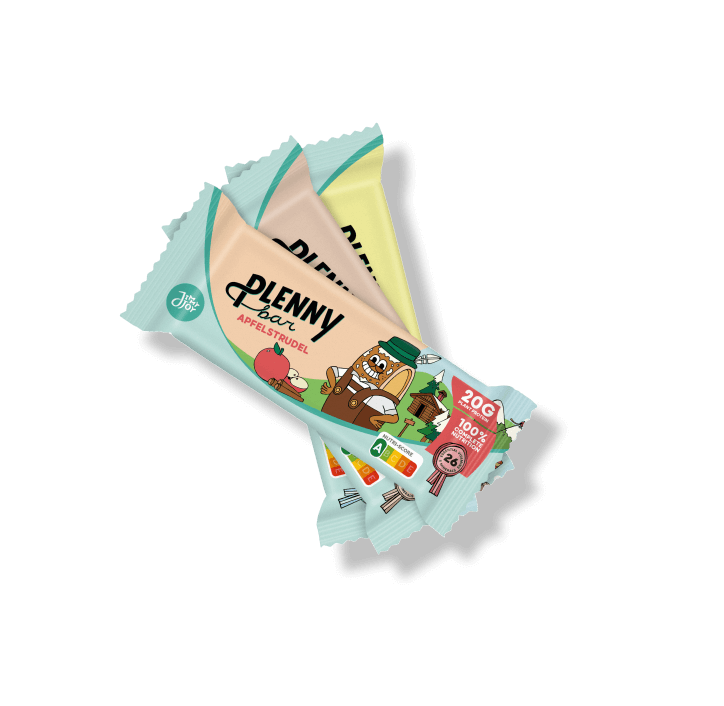


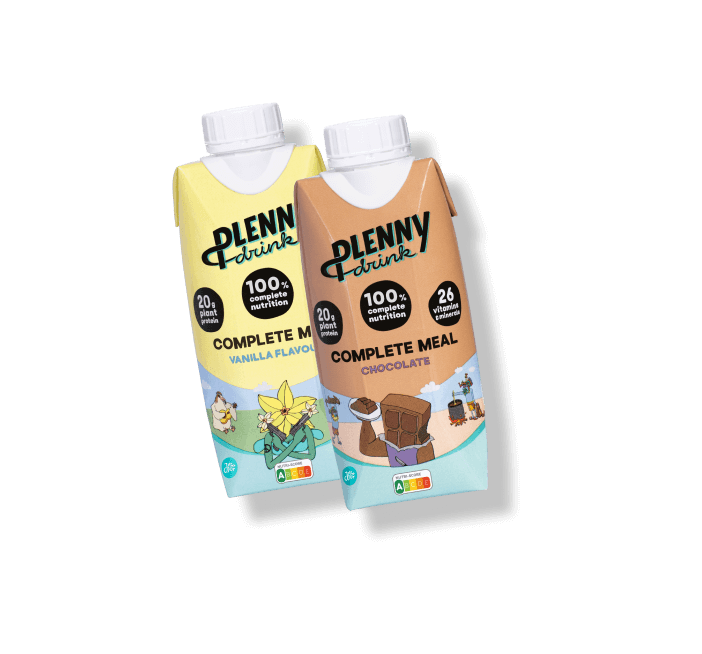
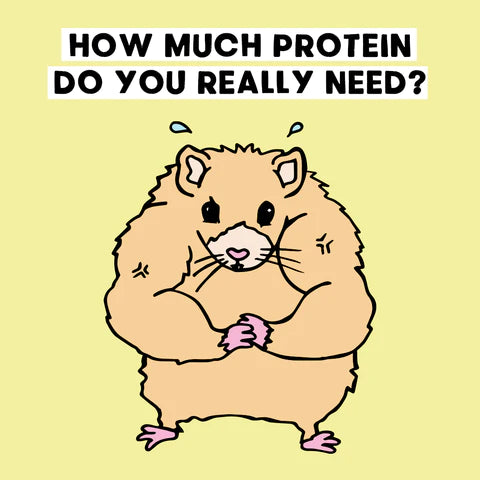

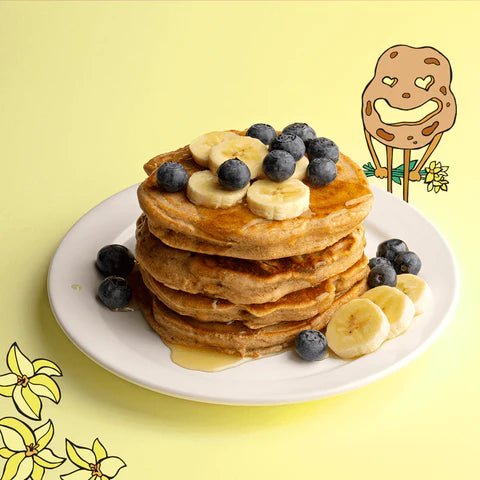









 Product added to cart
Product added to cart



